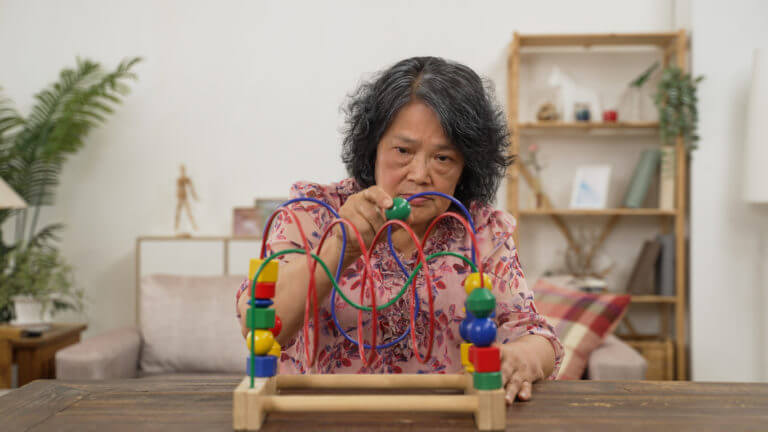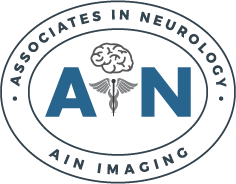
Parkinson’s disease is a neuro degenerative disorder that affects the brain, caused by nerve cell death, leading to low dopamine levels. It typically develops gradually over time and is characterized by a series of motor symptoms, which can present as uncontrollable movements.
If you suspect Parkinson’s disease in your loved one, a neurologist can play a central role in the treatment and management of the disease. Continue reading to find out more about the symptoms of Parkinson’s disease and the latest advances in treating the condition.
What Are the Symptoms of Parkinson’s Disease?
The primary symptoms of Parkinson’s disease are related to movement and include:
- Tremors: Involuntary shaking or trembling, usually starting in the hands, fingers, or limbs. The symptoms are present even while at rest.
- Rigidity: Stiffness and resistance in the muscles in the arms and legs. It is described as a feeling of tightness in the limbs.
- Bradykinesia: Defined by a slowness of movement that makes the simplest of tasks such as swinging your arms when walking and getting up from a chair more challenging.
- Postural instability: Impaired balance and coordination, leading to difficulties in maintaining an upright posture and an increased risk of falls.
Parkinson’s disease can also cause non-motor symptoms such as cognitive changes, such as problems with memory and attention, and sleep disturbances, such as insomnia.
So, what are the latest advancements in Parkinson’s disease treatment? Let’s find out.
Focused Ultrasound Technology
Focused ultrasound technology, which aims to tackle involuntary movements, is garnering significant results for patients with Parkinson’s disease. The non-surgical treatment involves focusing beams of acoustic energy to heal a small part of the brain without harming the surrounding tissue.
In a noteworthy clinical trial conducted by researchers led by researchers at the University of Maryland School of Medicine (UMSOM), the treatment’s effectiveness in reducing dyskinesia and motor impairment among individuals with Parkinson’s disease was demonstrated in about 75 percent of Parkinson’s disease patients out of 94 subjects. That’s twice as many patients achieving improvement in motor function. Even better, the patients continued to experience the positive results of focused ultrasound technology a year after the treatment.
This groundbreaking research, published in February 2023, has further heightened the excitement surrounding the evolving capabilities of focused ultrasounds. This heralds a new era for the treatment of Parkinson’s disease, as the non-invasive nature of the treatment means there is no risk of infection or hemorrhage as compared to deep brain stimulation, a therapy that involves the placement of electrodes through openings in the skull.
How Does Focused Ultrasound for Parkinson’s Disease Treatment Work?
Focused ultrasound is considered non-invasive, non-surgical, as it is incisionless, and requires no anesthesia. The device used to deliver focused ultrasound therapy to patients with Parkinson’s disease involves two technologies: ultrasound and magnetic resonance imaging (MRI). It is approved by the U.S. Food and Drug Administration (FDA) to treat advanced Parkinson’s disease on one side of the brain, based on findings from the UMSOM clinical trial.
Exablate Neuro is a medical device that utilizes focused ultrasound technology for non-invasive brain surgery. The Exablate Neuro system combines magnetic resonance imaging (MRI) guidance and high-intensity focused ultrasound (HIFU) to precisely target and ablate specific brain tissue without the need for traditional surgical intervention.
The procedure involves the following steps:
- Planning: Prior to the treatment, the patient undergoes an MRI scan to create a detailed map of the brain, which helps in planning the treatment area.
- Setup: The patient is positioned inside the MRI scanner and wears a transducer helmet, which houses the ultrasound transducer. The patient’s head is secured to ensure accurate targeting.
- Targeting: Real-time MRI images are used to guide the focused ultrasound beams to the target area in the brain, or the part of the brain that controls regular voluntary movement.
- Treatment: Once the target is confirmed, the Exablate Neuro system delivers focused ultrasound energy to heat and ablate the targeted brain tissue. The beams pass through the skull without causing damage to the surrounding structures and converge precisely on the target. The energy causes thermal destruction of the tissue and effectively interrupts the neural pathways responsible for motor symptoms.
- Monitoring: Throughout the procedure, real-time MRI imaging allows the medical team to monitor the treatment and ensure accurate targeting and ablation. The patient remains fully awake and can provide feedback to the team, who in turn monitors the safety and comfort of the patient.
Exablate Neuro offers a non-invasive alternative to traditional surgical procedures, providing Parkinson’s disease patients with potential benefits such as reduced risk of complications, minimal scarring, shorter hospital stays, and faster recovery times.
The suitability of Exablate Neuro for an individual patient depends on various factors, and it is important to consult with a medical professional – a neurologist – to determine the best treatment approach for their diagnosis.
Parkinson’s Disease Treatment in Farmington Hills, Novi, and Howell, MI
The board-certified and fellowship-trained neurologists at Associates in Neurology offer the latest FDA-approved treatments for Parkinson’s disease. Our neurology specialists specialize in the treatment of Parkinson’s disease and are committed to the improvement of our patients’ lives. We provide caring support for our patients and their family and caregivers.
Find out what treatments we recommend for you or your loved one. To schedule a consultation, call our neurology office today at (248) 478-5512, or use our convenient online request form.


